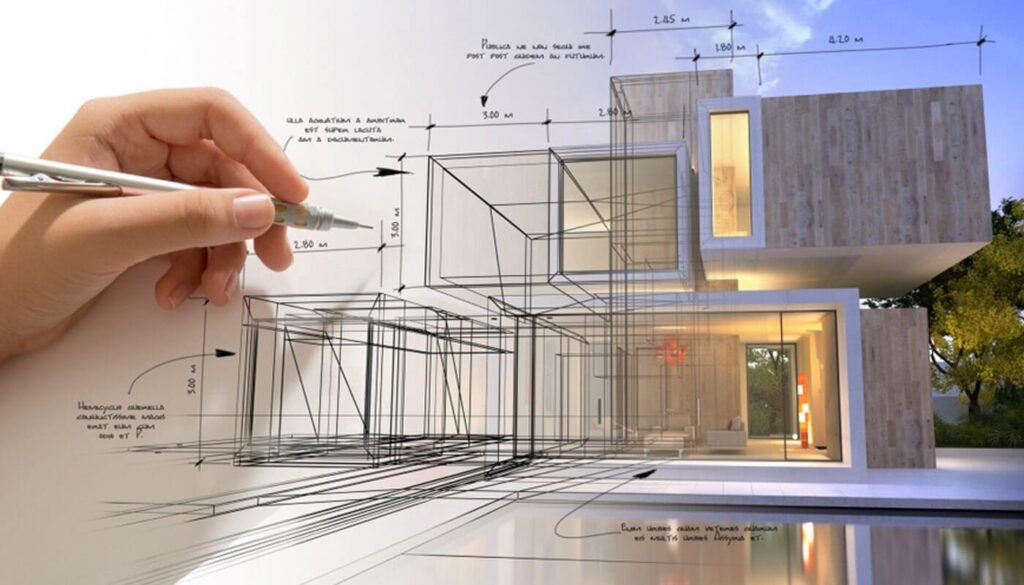Why CDA Architects Are Leaders in Architectural Style and Advancement
Why CDA Architects Are Leaders in Architectural Style and Advancement
Blog Article
Recognizing the Collaborative Process Between Architects and Designers in Modern Building Projects
The collective procedure in between engineers and designers is crucial in contemporary building and construction jobs, as it harmonizes design intent with engineering usefulness. Exploring these characteristics discloses insights that can dramatically influence task results and overall industry standards.
The Significance of Collaboration
The collective harmony in between architects and engineers is crucial for the successful awareness of any type of building and construction project. This collaboration unites distinctive knowledge and perspectives, enabling the combination of cutting-edge design with useful engineering options. By collaborating, architects and engineers can make sure that a project not only satisfies visual and useful demands however also sticks to safety, sustainability, and budgetary restraints.
Partnership cultivates a common vision, facilitating the positioning of objectives and expectations from the outset. This placement is critical in addressing potential challenges and mitigating risks that could develop throughout the task lifecycle. A collaborative approach enables for the reliable allowance of resources, optimizing both time and cost.
The significance of collaboration extends to the repetitive procedure of layout and construction, where feedback from designers can inform building choices, causing even more feasible and sustainable styles. Alternatively, architects can motivate engineers to believe creatively regarding exactly how to accomplish architectural stability without endangering artistic intent. Ultimately, the joint partnership in between architects and designers is not simply helpful; it is essential to the production of top notch, useful, and ingenious built environments that meet the demands of culture.
Interaction Techniques and Tools
Effective communication strategies and devices are essential for fostering cooperation between engineers and engineers throughout the job lifecycle. Developing clear channels of interaction is necessary to make sure that all employee are straightened with project goals, timelines, and responsibilities. Normal conferences, both in-person and online, supply possibilities for stakeholders to discuss progress, address problems, and make notified choices.
Making use of task monitoring software, such as BIM (Building Info Modeling) platforms, improves cooperation by enabling real-time sharing of layout alterations and technological specs. These devices assist in openness, allowing designers and engineers to picture modifications and examine their influence on the overall project.

Shared Objectives and Job Vision

Developing shared objectives entails open dialogue and a thorough understanding of each self-control's contributions. Engineers normally concentrate on design intent, spatial partnerships, and user experience, while designers stress structural honesty, systems functionality, and conformity with regulations (cda architects). When these viewpoints are aligned, the result is a natural project that sticks to both imaginative goals and technological feasibility
Additionally, a well-defined job vision promotes liability among employee, encouraging each participant to take possession of their role in accomplishing the preferred end result. Regular check-ins and collective workshops can additionally enhance this commitment, allowing for modifications to be check my reference made as the task evolves. Eventually, a common vision not just boosts teamwork however additionally boosts the quality of the final deliverable, causing effective project conclusion.
The Duty of Modern Technology
Leveraging innovation has actually become vital in boosting collaboration between engineers and engineers. Building Details Modeling (BIM) stands out as a pivotal innovation, permitting both architects and engineers to produce thorough 3D models that envelop layout intent and structural stability.
In addition, cloud-based platforms allow smooth cooperation, allowing job stakeholders to accessibility and upgrade project data from anywhere. This cultivates a culture of transparency and responsibility, as adjustments can be tracked and reviewed in real-time. Furthermore, mobile applications more enhance communication, supplying on-site groups with immediate access to task specifications and updates.
Arising modern technologies such as synthetic intelligence this website and maker learning are likewise starting to contribute in anticipating analysis, helping groups identify possible problems prior to they occur. Inevitably, the role of innovation in architecture-engineering collaboration not only improves process effectiveness yet also enhances development, resulting in more effective job end results. By accepting these technological innovations, engineers and designers can make sure an extra natural and efficient collective process throughout the building lifecycle.
Study in Successful Partnerships
Various study highlight the extensive impact of effective collaborations in between designers and engineers on project end results. One remarkable instance is the cooperation on the High Line in New York City City, where landscape designers, engineers, and urban planners functioned with each other to change an abandoned rail line right into a lively public park. This multidisciplinary technique not only boosted the visual quality but additionally made sure structural safety and security and environmental sustainability.
Another exemplary case is the style and building of the Sydney Concert Hall. The collaboration between engineer JÃ ¸ registered nurse Utzon and architectural engineer Ove Arup exemplified cutting-edge analytical. Their partnership enabled the renowned shell-like layout while dealing with complex engineering obstacles, inevitably bring about an ageless architectural masterpiece.
The Burj Khalifa in Dubai additionally demonstrates the importance of joint efforts. cda architects. The integration of design and design proficiency made it possible for the project group to achieve unmatched elevations while adhering to safety laws and aesthetic vision
These examples emphasize the value of interaction, depend on, and shared Check This Out purposes. In today's complicated building and construction environment, such collaborations are vital to browsing challenges and providing projects that satisfy both functional and visionary goals.
Verdict
In conclusion, the cooperation in between architects and engineers is important for the success of modern building and construction jobs. Reliable communication techniques, a common task vision, and the combination of sophisticated technologies are critical parts that facilitate this partnership.
Report this page